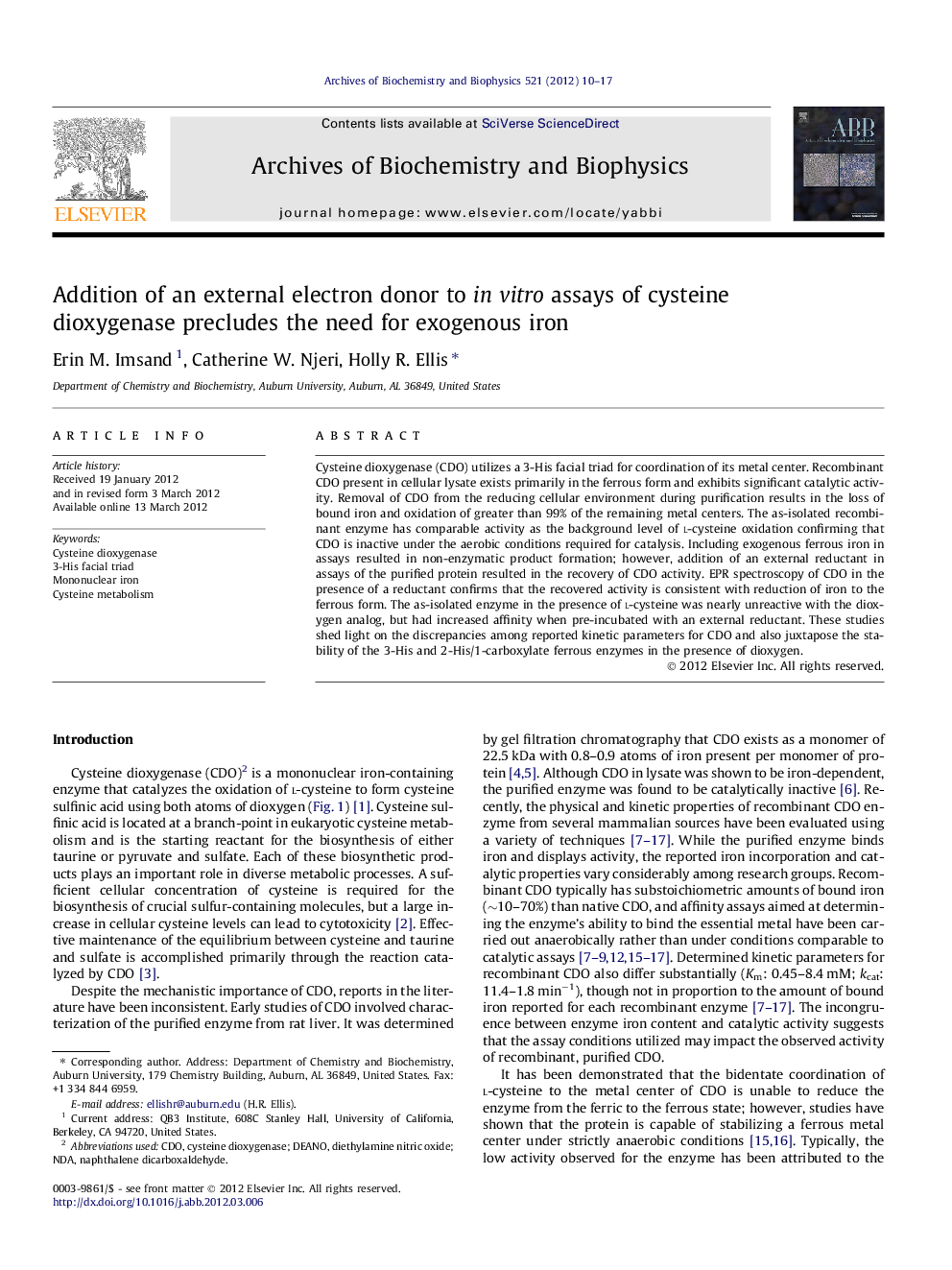| Article ID | Journal | Published Year | Pages | File Type |
|---|---|---|---|---|
| 1925563 | Archives of Biochemistry and Biophysics | 2012 | 8 Pages |
Cysteine dioxygenase (CDO) utilizes a 3-His facial triad for coordination of its metal center. Recombinant CDO present in cellular lysate exists primarily in the ferrous form and exhibits significant catalytic activity. Removal of CDO from the reducing cellular environment during purification results in the loss of bound iron and oxidation of greater than 99% of the remaining metal centers. The as-isolated recombinant enzyme has comparable activity as the background level of l-cysteine oxidation confirming that CDO is inactive under the aerobic conditions required for catalysis. Including exogenous ferrous iron in assays resulted in non-enzymatic product formation; however, addition of an external reductant in assays of the purified protein resulted in the recovery of CDO activity. EPR spectroscopy of CDO in the presence of a reductant confirms that the recovered activity is consistent with reduction of iron to the ferrous form. The as-isolated enzyme in the presence of l-cysteine was nearly unreactive with the dioxygen analog, but had increased affinity when pre-incubated with an external reductant. These studies shed light on the discrepancies among reported kinetic parameters for CDO and also juxtapose the stability of the 3-His and 2-His/1-carboxylate ferrous enzymes in the presence of dioxygen.
► Recombinant CDO in cellular lysate is in the Fe2+ form, and catalytically active. ► The low activity of purified CDO is due to an oxidized metal center. ► Exogenous ferrous iron in the assays leads to non-enzymatic cysteine oxidation. ► Ascorbate can reduce CDO and reconstitute in vitro activity.
